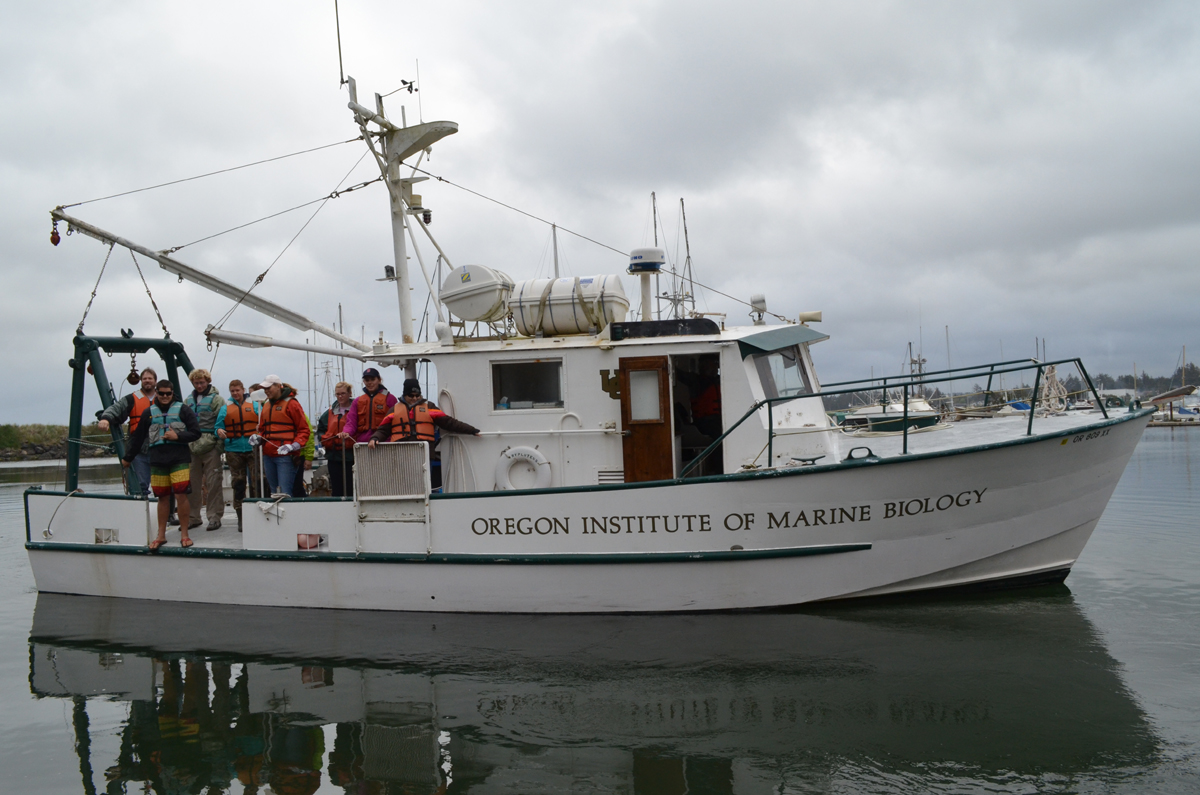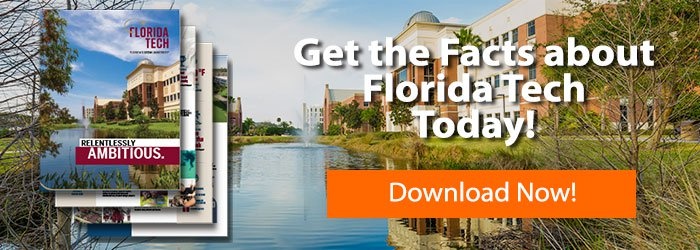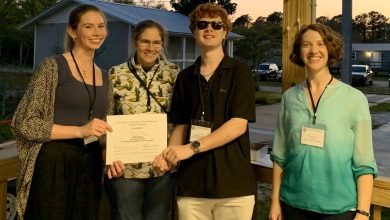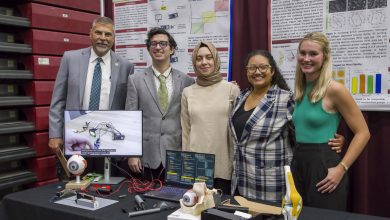Ahoy There!
Monday, May 14 – The tides are not at impressive this week, so we have to get more aggressive about accessing submerged habitats. The biological oceanography students from Florida Tech ventured out into the “Bay of Coos” aboard the R/V Pluteus in order to carry out trawls.
The first trawls were inside the bay at “Clam Island,”
where the dominant catch were Dungeness crab (Cancer magister),
the short-spined lavender sea star (Pisaster brevispinus), and the shovel-nosed sand shrimp (Crangon sp.).
We also caught a few fish, for which it was critical to take good notes in order to submit our trawl report to the Oregon Department of Fish and Wildlife. The most common fish were small flatfish or “dabs.” There were many clams!
After the bay trawls, everyone seemed to have their “sea legs,” and the bar at the mouth of the bay had minimal waves, so we laid in a course for the open coast. The mouth of the bay afforded great views of the outer coastal beaches and the northern-most portions of the Oregon Institute of Marine Biology campus. At this point, however, one or two of the Florida Tech Biological Oceanography students had their sea legs knocked out from under them.
We decided to do just two quick sandy dredge trawls before heading back to the calmer waters of the bay. The trawls yielded our primary target quarry, the elusive sand dollar Dendraster excentricus! This was exciting because Dendraster was a major goal today for Florida Tech’s Biological Oceanography group.












